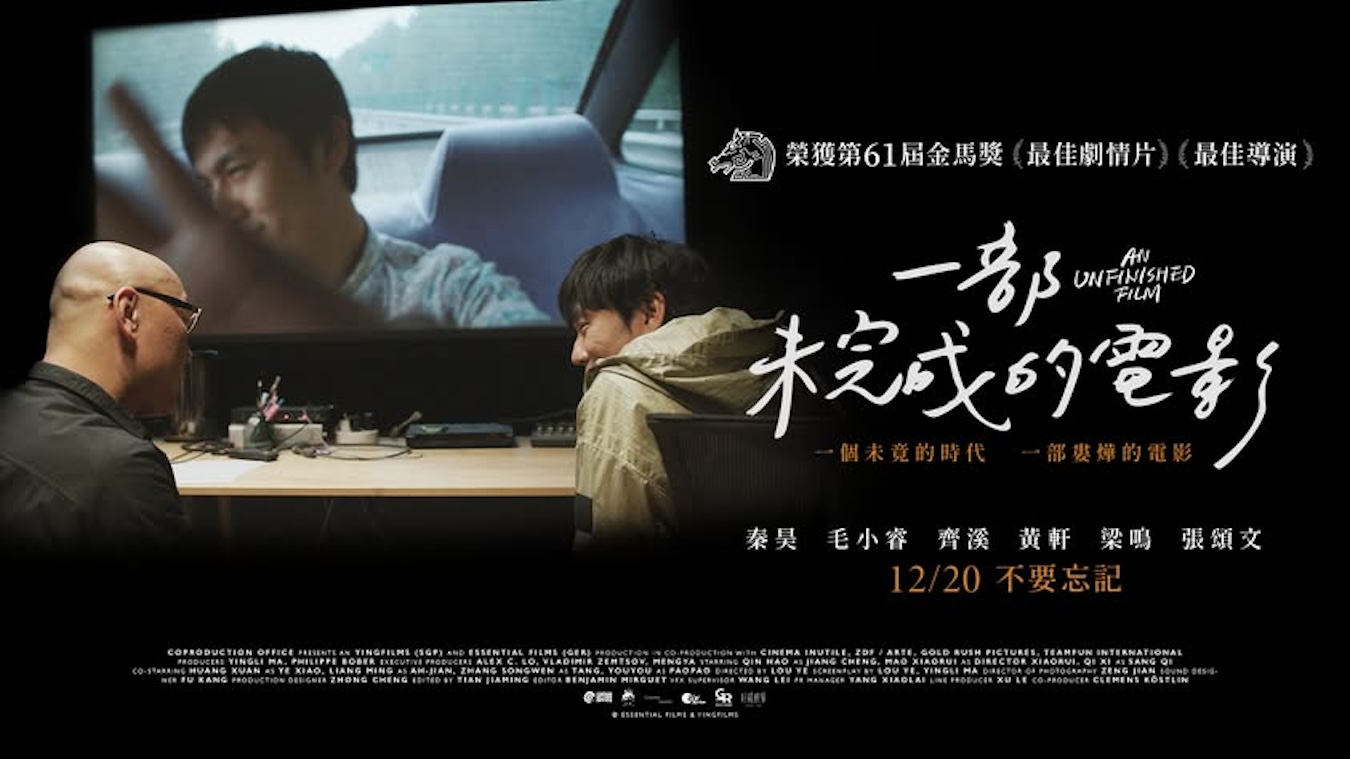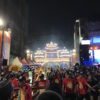by Brian Hioe
語言:
English
Photo credit: Film Poster
LOU YE’S An Unfinished Film is a gripping look at the lockdown in Wuhan, China, focusing on the early stages of the COVID-19 pandemic. But the movie is more than that. Rather, the film proves something of a farewell to sixth-generation Chinese cinema and the era of optimism that, in many ways, sixth-generation Chinese cinema reflected.
In particular, Lou Ye’s mixture of a documentary and fiction movie follows a film crew that reunites after ten years to finish their incomplete first movie, which was never completed due to running out of budget. Although the times have changed and this first film would be unable to be released in today’s China, the crew comes together nonetheless.
Director XIaorui and lead actor Jiang Cheng are the members of the crew that receive the most focus. In dialogue, Xiaorui and Jiang reflect on what has changed in the last ten years, not only in terms of filmmaking technique, but the political environment in China.
Yet the attempt to finish the movie runs into the start of the COVID-19 pandemic. This is what leads to the movie ultimately becoming an unfinished film, as the final day of the shoot is canceled, but not in time for the crew to escape from Wuhan before being locked down in the hotel they are staying.
An Unfinished Film proves remarkably accomplished in how it blends together past and present in its shooting style, transitioning seamlessly between archival footage of past films–drawn from unused footage from Lou Ye’s own work–and scenes that take place in Wuhan in 2020. The scenes of casual panic, as the team contemplates whether to call off the shoot and then finds themselves forcibly confined to their rooms, are also excellently staged.
As this occurs, the digital world of COVID-19, in which the cast is constantly on their cell phones and communicating with each other and their loved ones back home becomes part of the visual language of the movie. If the movie begins with the protagonists remarking on the transition away from digital video, this then flows into the shift toward the hybrid spaces of the pandemic. Indeed, when one examines the movie as a whole, there does not seem to be a single scene in which the characters are ever outdoors–in almost all scenes, they are in claustrophobic, indoor spaces. The most comparatively free and open space that the characters ever inhabit in the film is an editing studio. Perhaps this reflects how Lou Ye views the liberatory possibilities of film.
If An Unfinished Film has a weak point, it is that the characters are relatively bland and cookie-cutter. Likewise, while Lou probably aims to show the ties of mutual aid and solidarity that develop among regular Chinese people quarantined by their government, no real moments of friction are ever shown between his protagonists.
But regardless, An Unfinished Film proves an emotionally charged and vivid look at COVID-19 in China, including depicting the eventual resistance of the Chinese people against their government in the form of the “White Paper” protests. And the movie also proves a farewell to the sixth-generation Chinese cinema from one of its leading lights, as a reflection on a period in which such filmmaking was possible due to the opening up of political freedoms in China, as COVID-19 proved to be a definitive end to that period.



